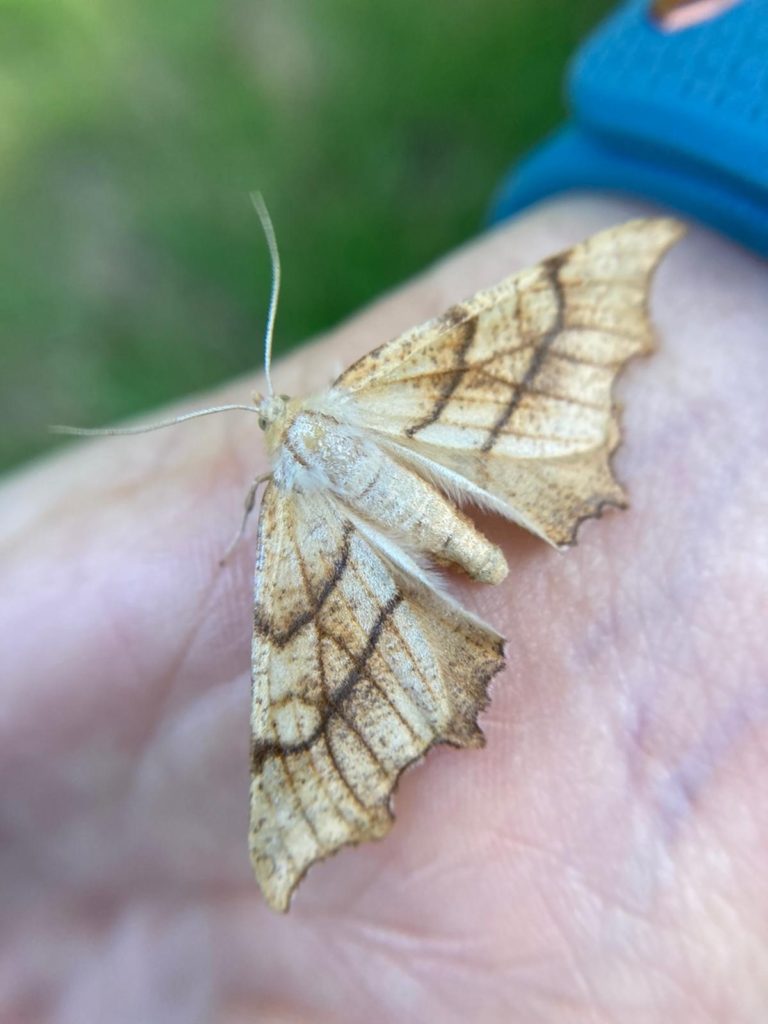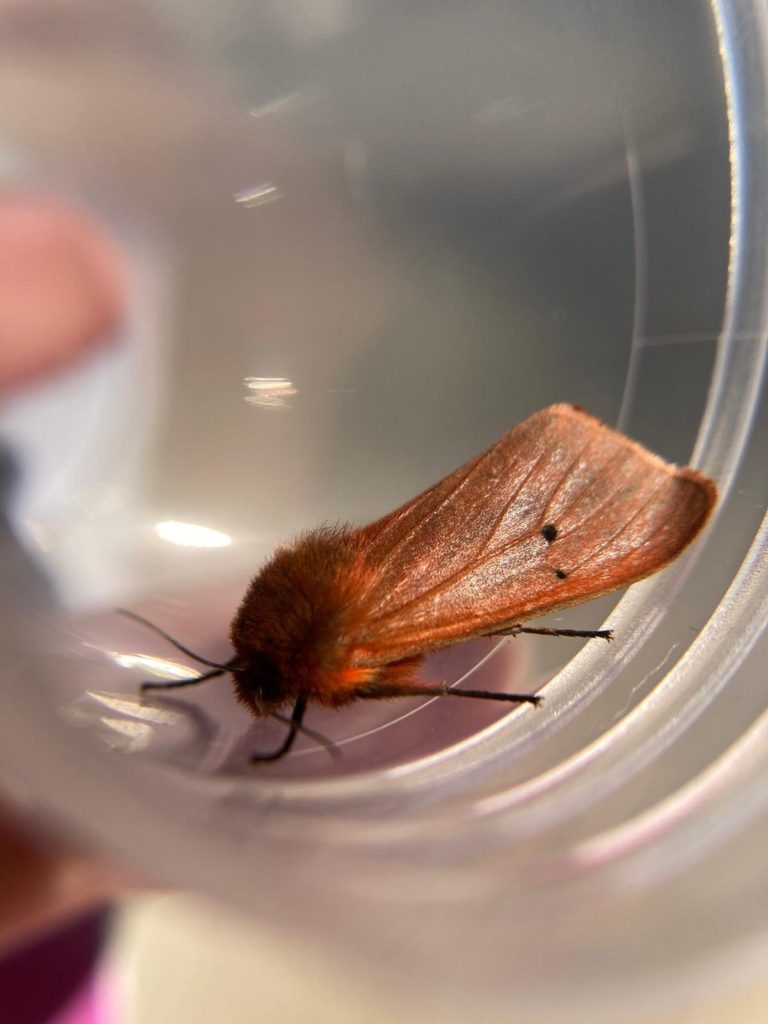PHCA weekly walks
By Maureen Betts
Have you heard of Mission: Invertebrate, a project launched by the Royal Parks in 2017 to enrich wildlife in London’s largest and busiest green spaces? Their Partnership and Community Engagement Officer is May Webber, and for one of our PHCA weekly walks at the end of June she gave us a guided tour through Regent’s Park to show us where the Mission is encouraging more insects like stag beetles, hoverflies, dragonflies, bees etc. to take up residence and multiply. These habitats include ponds for dragonflies, dead trees for beetles and the bee mound just off the Broad Walk for solitary bees. We all found May’s talk on invertebrates and her knowledge most impressive and enjoyable.
In July May invited us to meet her in the Wildlife Centre next to Hanover Bridge in Regent’s Park, where she and colleagues from Mission: Invertebrate had set up moth traps the night before. We all gathered under the trees where a table with a variety of leaflets about moths, butterflies and caterpillars were available for us to take away. The moths that were caught in the traps were in small plastic jars, so we were able to examine them whilst being told what they were called, what habitat they preferred and what they ate. Ele Johnston from Big Butterfly Watch told us about local butterflies and Alice Evans from Adult learning, Mission: Invertebrate was instructive about all forms of insects. The finale was a walk to the wild flower meadow in the north area of the park, where we saw day-flying moths and butterflies in abundance, as it was a warm and sunny day.





